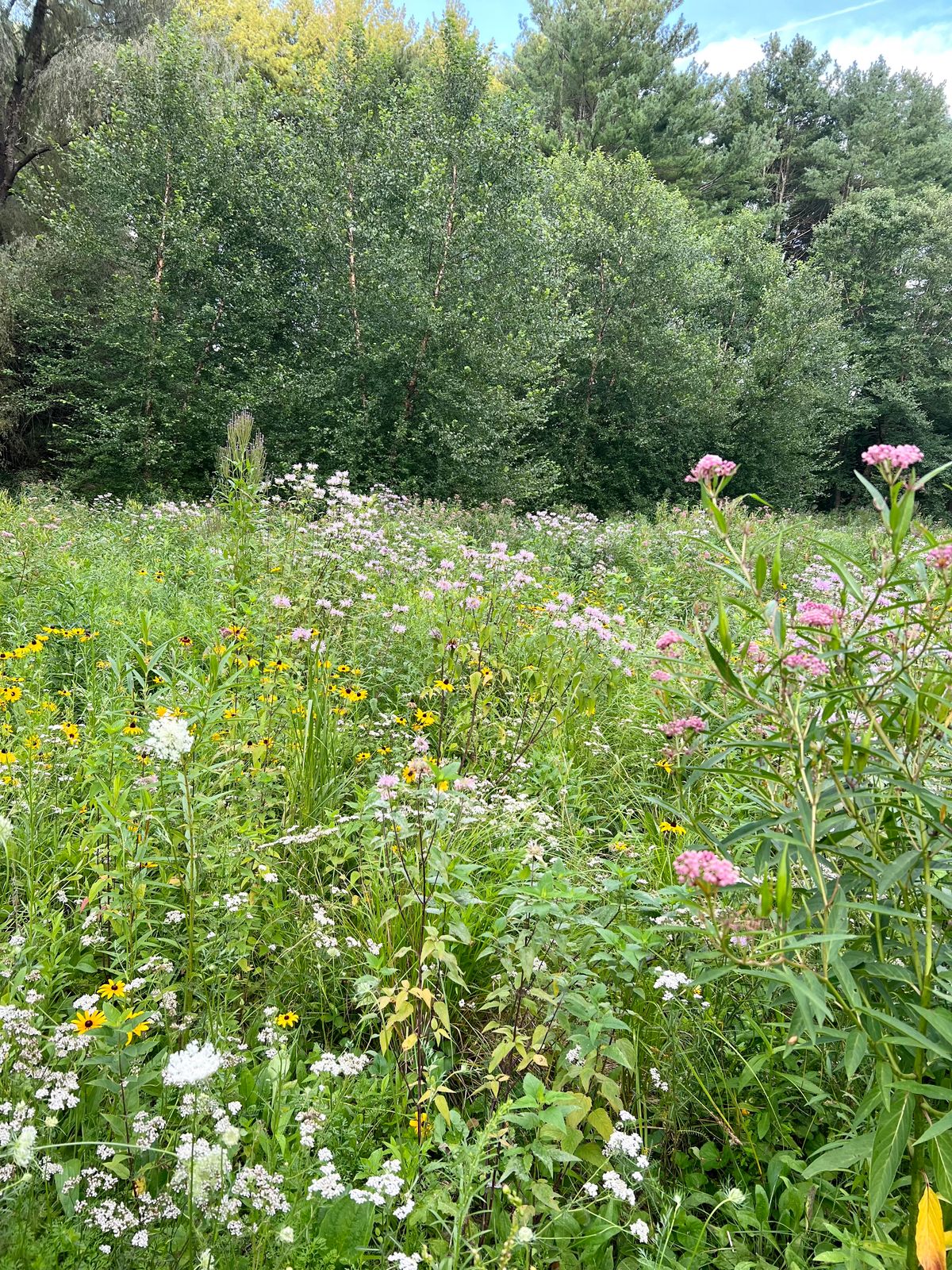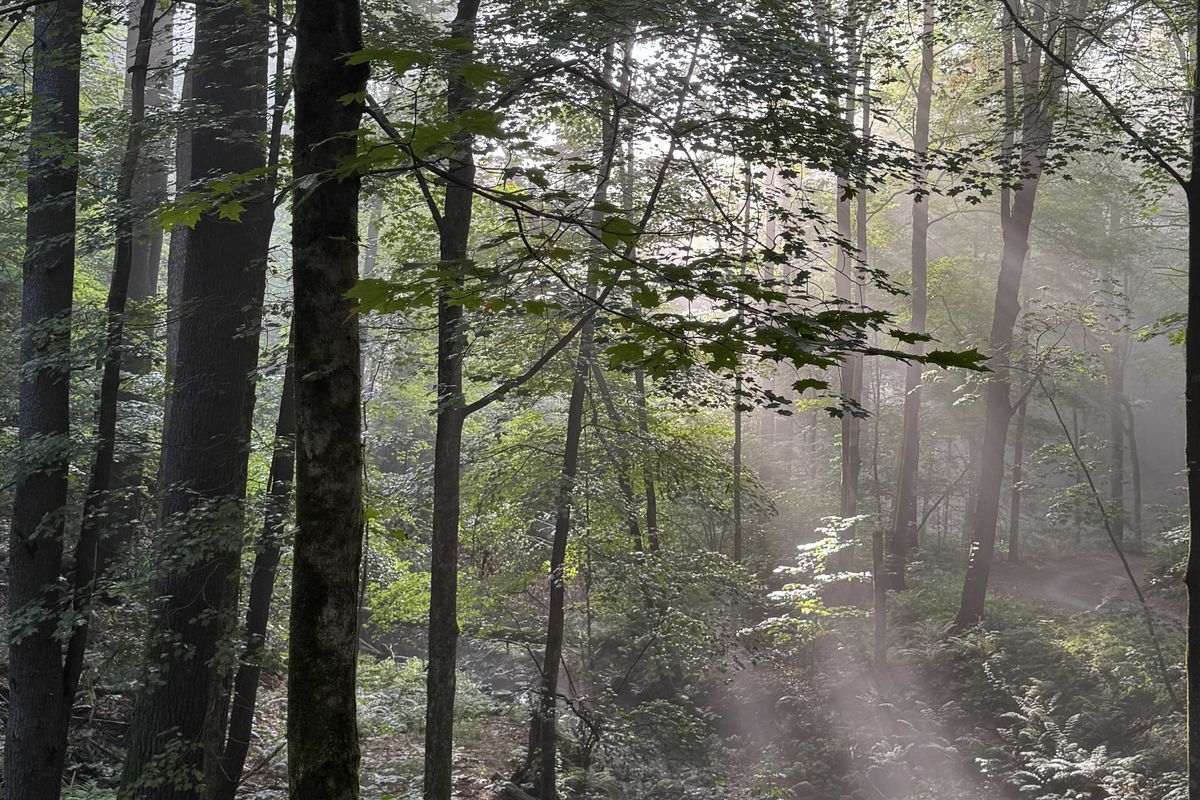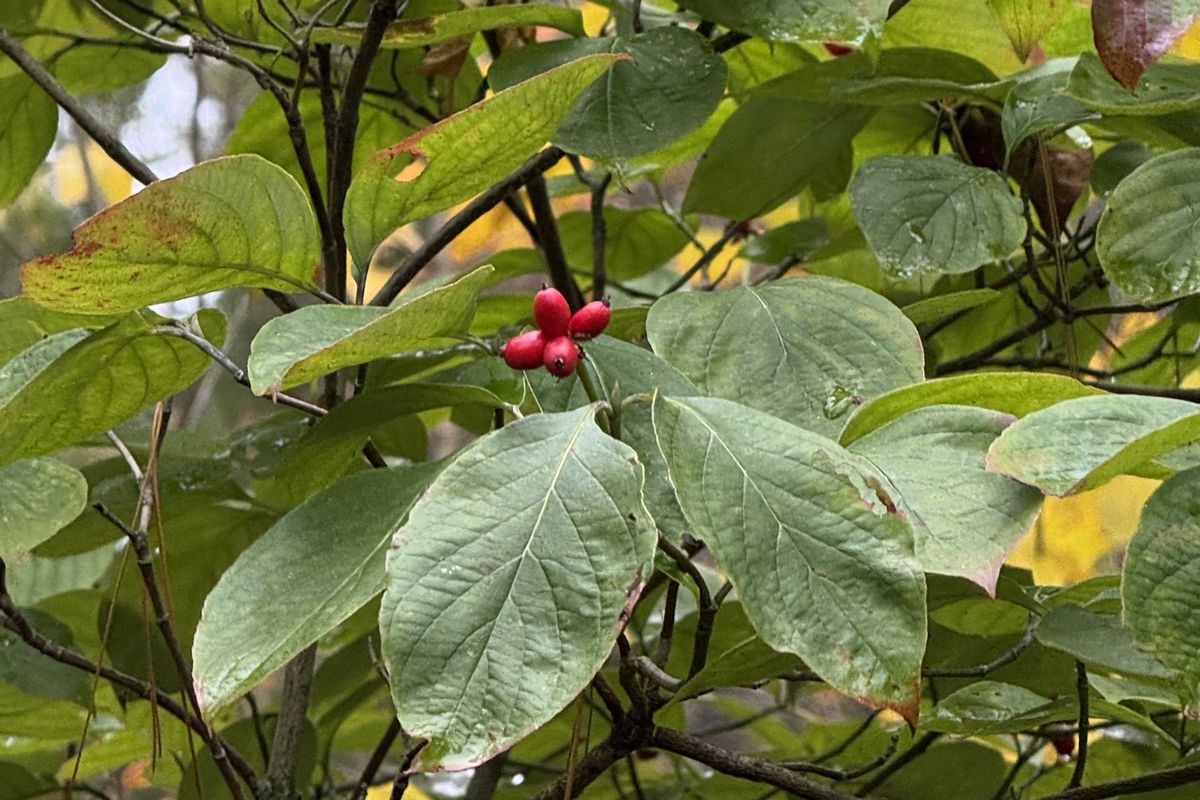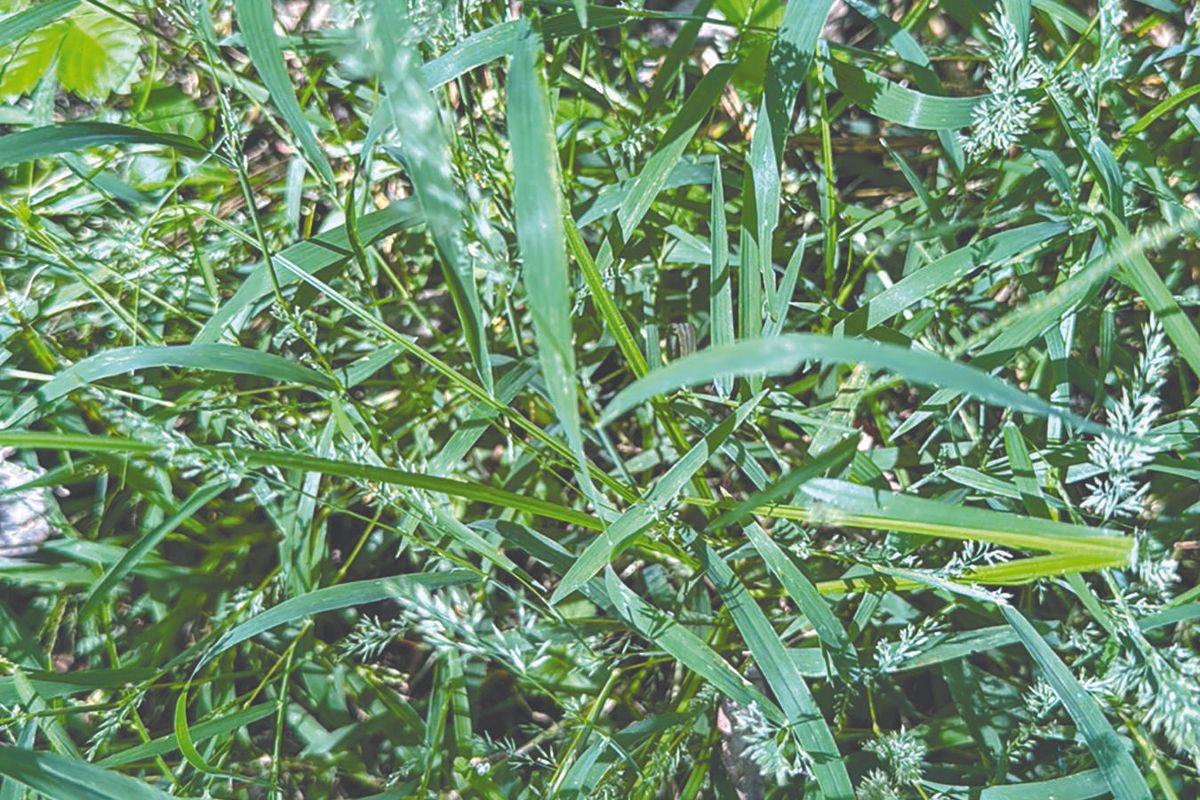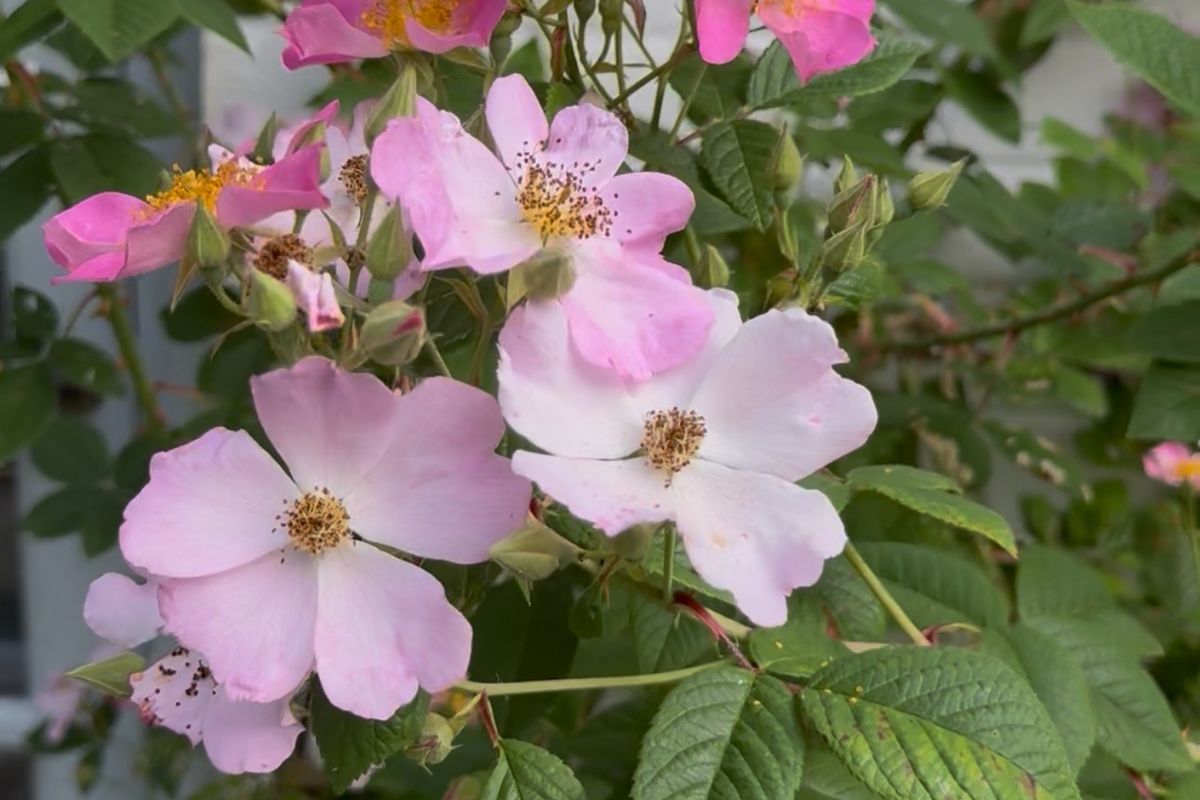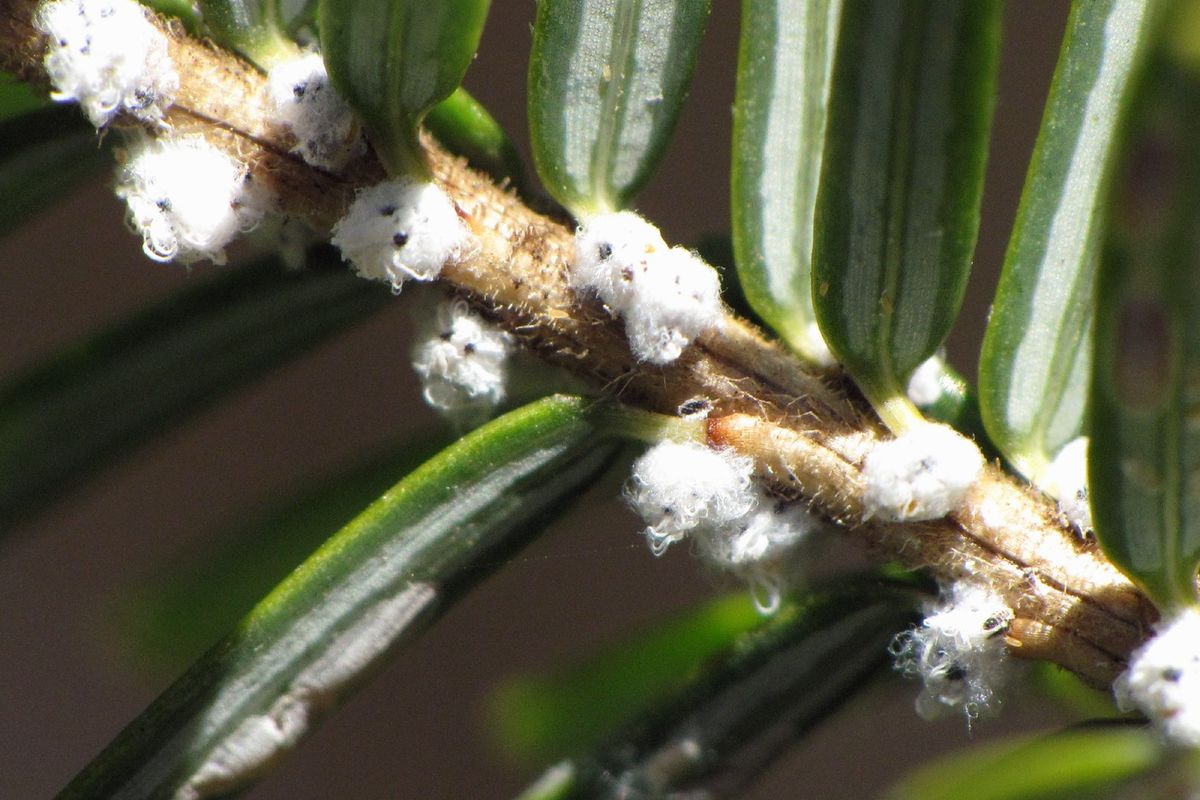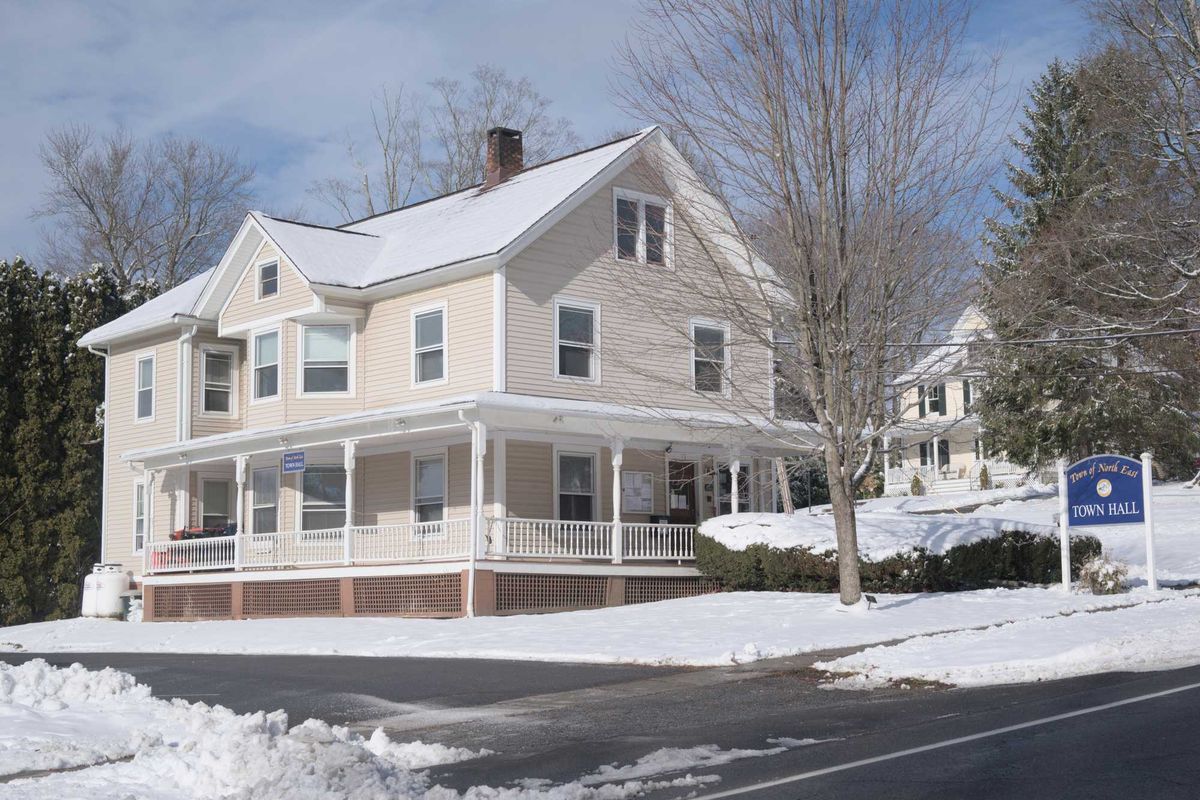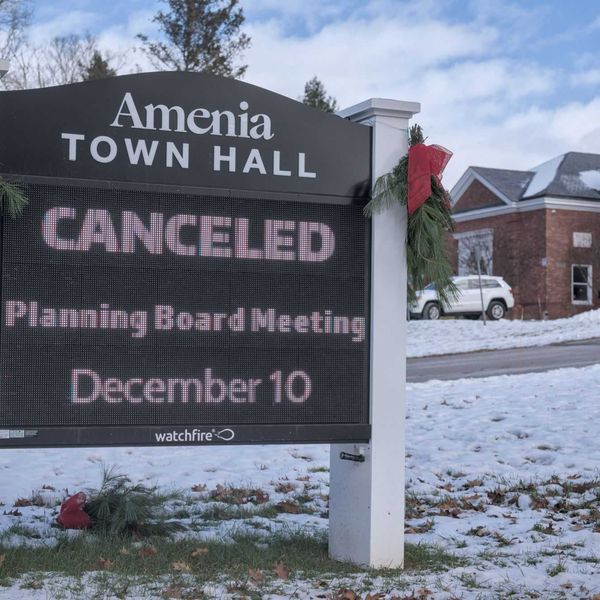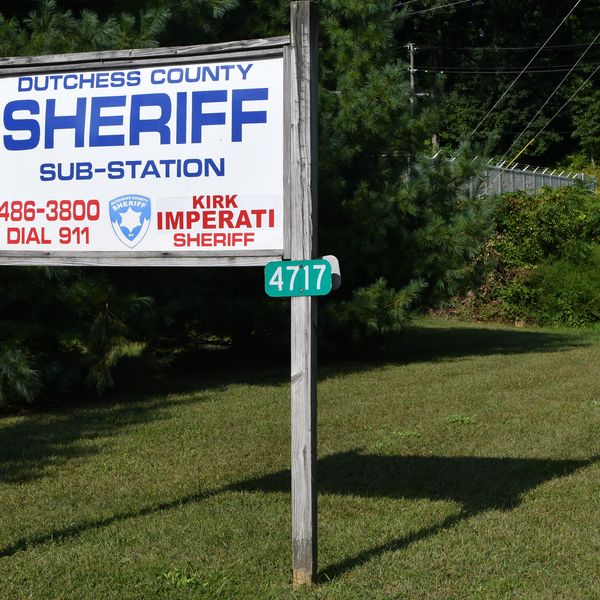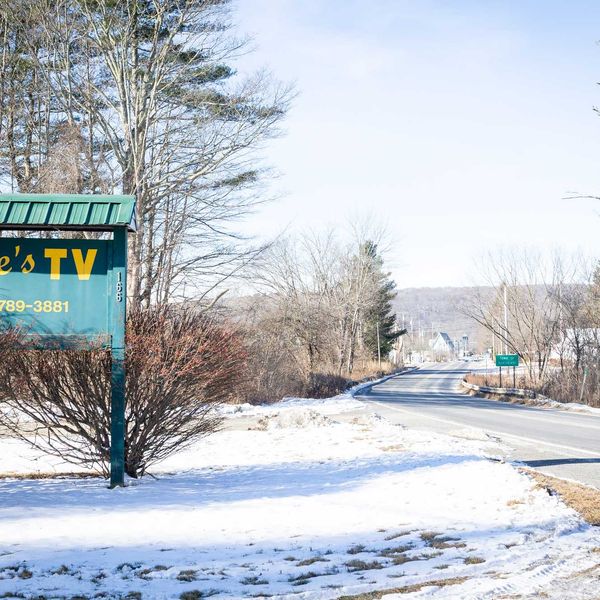Latest News
Millerton trustees ease parking rules for business district, advance pool and park plans
Dec 17, 2025
An artist’s rendering shows what the pool and pool house at Eddie Collins Park could look like. During a meeting on Monday, Dec. 15, Village of Millerton Trustees decided against heating the pool to reduce costs.
Illustration provided
MILLERTON — The Village of Millerton Board of Trustees approved a local law on Monday, Dec. 15, that will ease parking restrictions in the village’s General Business District. The law was immediately passed following a public hearing.
The local law amends Chapter 170 of the Village Code, titled Zoning, by eliminating off-street parking requirements for changes of use within existing structures in the General Business District. Under the amendment, “no additional off-street parking spaces shall be required to convert space within an existing structure in the General Business District from one use or occupancy to another, even if such proposed new use would increase demand for parking.”
The change will only apply to existing buildings and will allow businesses and residents within the district to move forward with new uses without triggering additional parking requirements.
“This is intended to be a quick fix,” said village legal counsel Victoria Polidoro. She noted that while the board has discussed several approaches to addressing parking and zoning challenges, this change was viewed as relatively easy to implement with fast results. Village officials said the update would be communicated through their official communication channels.
Mayor Jenn Najdek and architects from engineering firm LaBella Associates provided a few key updates on village projects at the meeting, including a presentation on the planned pool at Eddie Collins Memorial Park on Route 22.
The meeting drew roughly a dozen residents, including members of the Park Committee who have contributed to and followed the pool project for years. Kevin Hasselwander, senior landscape architect with LaBella, joined the board meeting to walk trustees and members of the public through the proposed design.
“From an estimate to the village, to the Park Committee, to a napkin sketch and now a master plan — it’s hard to believe that this project has come to fruition,” Hasselwander said, thanking village officials and volunteers for their collaboration and refinement. Following the presentation, the board made final decisions to refine the scope and design of the project.
First, the board agreed unanimously not to move forward with heating the pool, citing both the significant upfront cost and ongoing maintenance expenses. Najdek expects the pool will operate primarily between Memorial Day and Labor Day, and the group agreed to instead use a solar pool cover, which will provide passive heating benefits and help with winterization.
The board also voted to fully equip the pool house kitchen to meet Department of Health standards, which would allow it to function as a commercial kitchen.
With LaBella on site at Village Hall, the board reviewed final design details for Veterans Park, including landscaping plans, paved pathway colors and a herringbone paving pattern. Trustees approved the revisions and directed that the updated plans be sent to the county for review. Village officials said the goal is to complete construction by Memorial Day.
Keep ReadingShow less
William J. Clark, Jim Milton, Joseph Olenik and Spencer Parks make up the village highway department and pose in front of new snow removal equipment.
Photo by Aly Morrissey
MILLERTON — Winter may not officially begin until Dec. 21, but snow has already arrived in Millerton. The early snowfall comes after nearly a year of rebuilding following a February fire that destroyed the village’s highway and water structure, along with all of its snow removal equipment. That long recovery makes this winter’s readiness especially significant for the village.
The Village Highway Department is the small but mighty crew that keeps the roads and sidewalks safe, and not only do crew members feel prepared for the colder months, they’ve already been tested by several early-season snowfalls.
“Now we finally have all the proper equipment that we need,” said Jim Milton, a longtime member of the village’s Highway and Fire Departments. “That’s all thanks to this man right here,” he added, gesturing toward Highway Superintendent Joe Olenik.
Olenik, who also serves as Millerton’s police chief, stepped into the role of highway superintendent at the end of September. While this will be his first winter leading the department, he brings extensive knowledge of the village and has a close working relationship with the crew.
“Joe has been a great help and has given us the opportunity to be more prepared,” said William J. Clark, who joined the department a year and a half ago. “Even after the fire and having to work out of a temporary space, we were able to get back up and running fairly quickly.”
Milton said every vehicle currently in use by the department is new, after the fire destroyed nearly everything housed in the building. In the months that followed, the village relied on borrowed equipment from the county and neighboring municipalities, including the towns of Ancram and Amenia.
During one of this season’s first storms, Clark said conditions became especially challenging due to slush and freezing. “Our first storm wasn’t too crazy, but because of the slush, it gets pretty dicey having to go back and scrape,” he said.
Navigating those conditions requires coordination and trust among the crew. Olenik praised the department’s teamwork, a sentiment echoed by crew members.
Clark and Milton agreed, saying the crew regularly puts their heads together to develop a plan and respond efficiently — often before the first flake hits the ground. That planning extends beyond equipment and manpower, and deciding which roads to plow first isn’t an exact science.
Olenik said the department remains flexible and works to clear all “village-dedicated roads.” He added, “All roads are important to clear to allow emergency vehicle response for fire and EMS vehicles and school buses.”
Olenik also noted the importance of intermunicipal cooperation, saying it is reassuring to have support from the Town Highway Department when needed. He said that Bob Stevens, the town’s highway superintendent, has been a valuable resource.
When storms hit, timing is often dictated by safety rather than the clock.
“It’s really dependent upon conditions and how safe the roads are,” Clark said, noting that crews are often out in the middle of the night or early pre-dawn hours if conditions warrant it. “It’s just part of the job — it’s what we do!”
While the crew is a positive group, fueled by jokes and wisecracks, the job carries very real risks. During winter storms, workers face limited visibility, hidden road hazards, fatigue and long shifts, slippery roads and challenges of operating large and heavy equipment.
One of the most preventable hazards is other drivers on the road. The department reminds drivers to slow down, give plows space and adhere to the seasonal overnight parking ban, which allows crews to clear the roads more efficiently.
There is no fixed snowfall amount that triggers a response from the department. Olenik said they are “flexible based on staffing, storm severity, and real-time conditions.”
The highway department is made up of Jim Milton, Spencer Parks, William J. Clark, and Joe Olenik.
Keep ReadingShow less
The Thorne Building on Franklin Avenue in Millbrook, built in the 1890s and vacant for decades, is slated for renovation into a community arts and cultural center.
By Nathan Miller
MILLBROOK – Plans to renovate the historic Thorne Building on Franklin Avenue, built in the 1890s, into a community center moved forward Monday, Dec. 8, as the Millbrook Planning Board accepted an application for the project, which is scheduled for review early next year.
“The Thorne Building has been a landmark building,” said architect Michael Sloan of Millbrook, describing its history as a school for the Village of Millbrook. After the village constructed a new elementary and high school, use of the building declined, and by the mid-1990s it had fallen into disrepair. Sloan said the building has been vacant for roughly 20 years.
Plans call for transforming the building at the top of Franklin Avenue into the Thorne Center, a community arts and cultural hub. The center would offer film and theater programs, a technology center, co-working space, culinary programs, gallery space, a computer gaming room, music and art studios, and facilities for public meetings, events and seminars.
The proposal includes restoration of the building’s exterior while maintaining its overall architectural character. Modifications are planned for the carriage arch on the east side of the structure. Plans also call for construction of improved access, adding a room to accommodate a loading platform. The existing auditorium would be converted into a full performance space.
The basement level is planned to house an education center with a kitchen that could support cooking classes, as well as an arts lab, digital instruction space, music practice rooms and a small recording studio.
The first floor would feature exhibit space for local artists, offices and studio workspaces. Flexible classroom space planned for the third floor would be designed to be divided into three smaller classrooms using movable partitions. That level would also house the director’s office, fine arts programming and the control room for the performance space below.
“The whole building is for the community,” Sloan said.
Site improvements include upgrades to the parking lot shared with Lyall Community Church. Sloan said a new subsurface would be installed to address an ongoing problem with ponding, followed by paving with permeable asphalt. Lighting would be dark-sky compliant, limited to 12 feet in height and directed downward at minimal brightness for safety.
Plans also call for a perennial garden at the front of the property. Traffic access would be one-way from Franklin Avenue, with vehicles exiting onto Maple Avenue.
Planning Board Chairman Frank Redl said the board will want to review whether any easement exists that allows traffic to flow through the church’s parking lot.
Oakleigh Thorne, president of the nonprofit Millbrook Community Partnership, said $26 million has been raised toward the project’s estimated $30 million cost. The organization owns two limited liability companies — one overseeing development of the 32-acre Bennett Park and another, Thorne Memorial Building LLC, overseeing the Thorne Center project.
Sloan said the team hopes to begin the bidding process in late spring, with construction expected to take about a year once work begins.
Thorne added that the Tribute Garden organization will provide maintenance for the Thorne Center, at least during its early years of operation.
“I think it’s exciting for the village,” Redl said, as the Planning Board accepted the application.
Keep ReadingShow less
North East Town Hall on Maple Avenue in Millerton.
Photo by Nathan Miller
MILLERTON — North East Town Board members approved a $168,000 loan from the Bank of Millbrook to purchase a new truck for the town’s Highway Department at their regular meeting Thursday, Dec. 11.
The meeting marked the board’s final session of the year.
The town received financing offers from three banks, with interest rates of 3.9%, 3.6% and 2.25%. Board members unanimously approved the lowest bid — a 2.25% rate from the Bank of Millbrook.
Town Supervisor Chris Kennan also updated the board on plans for the new Town Hall, which will be located in the former Jehovah’s Witness Hall on Route 22, south of the Village of Millerton. Kennan said interior renovation design drawings are expected soon and that he hopes to schedule a special meeting in January to allow residents to review the plans and ask questions. A date has not yet been set.
Kennan further briefed the board on a dispute with Suburban Propane involving a buried propane tank discovered at the former Jehovah’s Witness Hall property. After the tank was uncovered, Suburban Propane asserted ownership and demanded the town purchase it for $2,500.
Further investigation revealed the tank bears a sticker reading “Suburban Propane customer-owned property.” In response, board members authorized town attorney Warren Replansky to push back against the company’s claim.
“We’ve been asking, you know, since this started, for proof of ownership,” Replansky said. “We’ve never gotten that.”
Pine Plains Central School District Superintendent Brian Timm addressed the board to outline the district’s anticipated funding challenges, saying officials are preparing for a potential $4 million reduction in state aid and are exploring ways to mitigate the impact.
Timm said the district has historically received about $6 million in annual “foundation aid” from New York state, but ongoing tensions between the Trump administration and state officials have prompted Albany to take a closer look at public aid disbursements.
In the past, New York maintained a policy that protected school districts from reductions in foundation aid, Timm said. That safeguard, however, is now under review as the state responds to cuts in federal funding.
“I think the governor has some difficult decisions that she needs to make in her preparation of her budget,” Timm said. “So, I’m not 100% sure that we will be fully funded in foundation aid.”
Timm said the district is proposing to close its elementary school building in an effort to “right-size” operations. He said the district’s two remaining buildings would be sufficient for current enrollment, and that closing the elementary school could reduce costs and generate revenue through a potential sale or lease of the property.
More information is available on the Pine Plains Central School District’s website at ppcsd.org.
The meeting also marked the end of Ralph Fedele’s 12-year tenure on the Town Board, prompting members to approve a resolution of commendation.
Kennan praised Fedele for his commitment to public service and his work revitalizing and maintaining historic landmarks throughout the town.
“Ralph Fedele has served three four-year terms as a councilman on the Town Board of the Town of North East with good humor, kindness to all, and a deep concern for the community’s senior citizens and for those living on fixed incomes,” Kennan read from the resolution. The resolution was approved by a unanimous roll-call vote.
Community members used the public comment portion of the meeting to further praise Fedele and his service.
“The way you laugh, it opens my heart,” said Claire Goodman, a Millerton resident and volunteer with the Friends of Spencer’s Corners Burying Ground. “It doesn’t matter whether we’re standing out in the cold, scrubbing tombstones at Spencer’s Corners, or whether you’re ringing the bell at the schoolhouse. You always have such grace, and you’re a true gentleman, and one of the reasons I decided to stay here. Thank you.”
Keep ReadingShow less
loading
